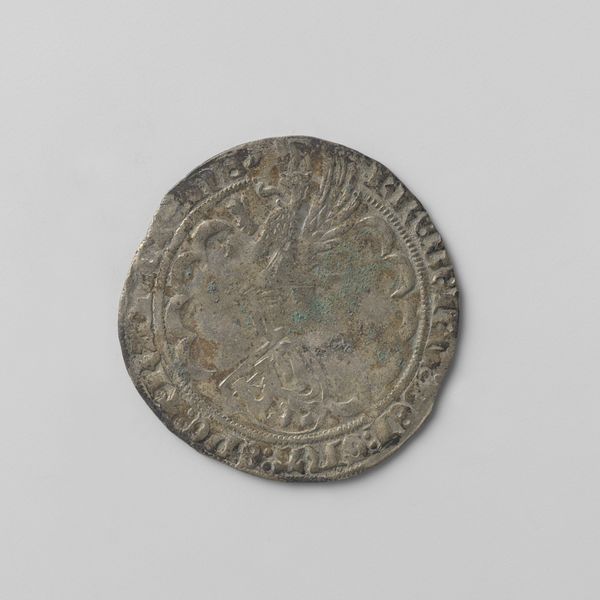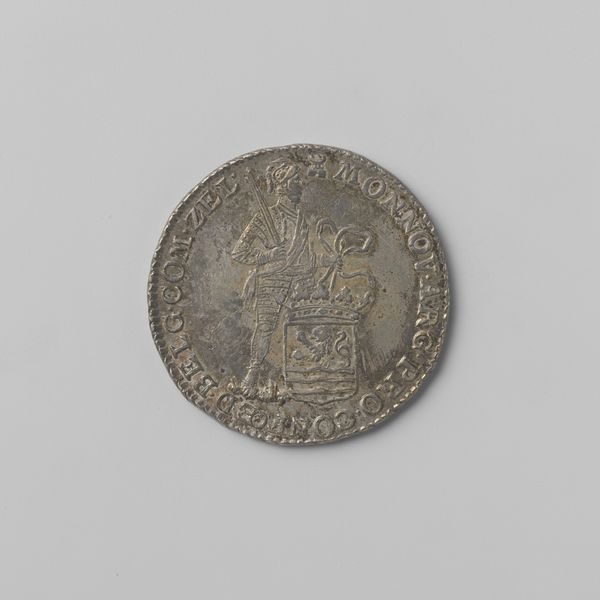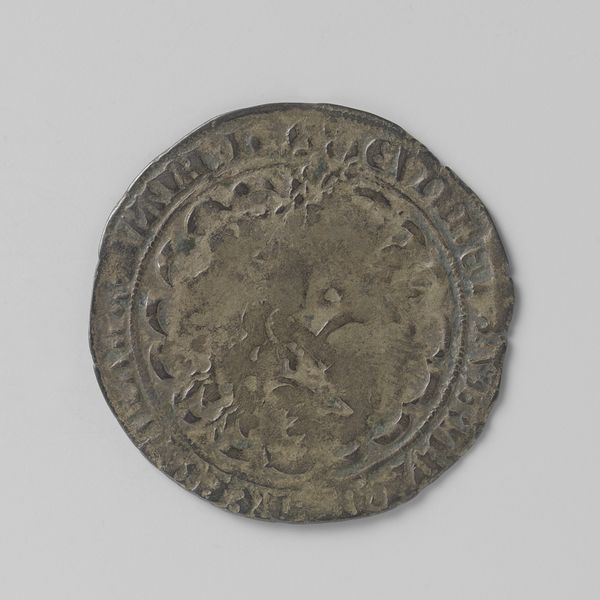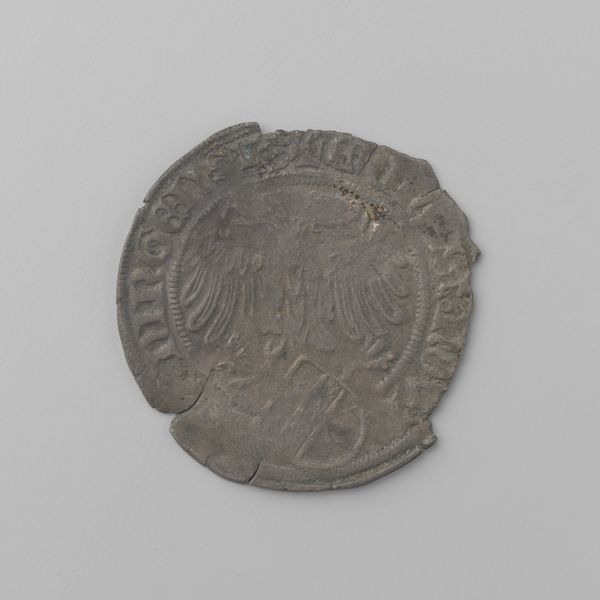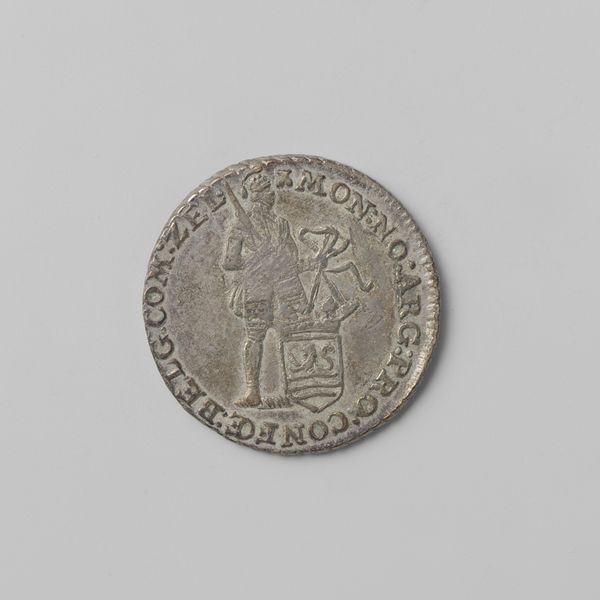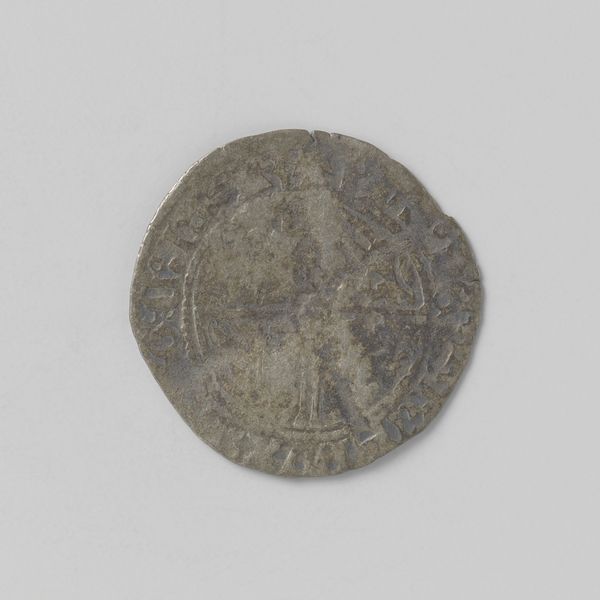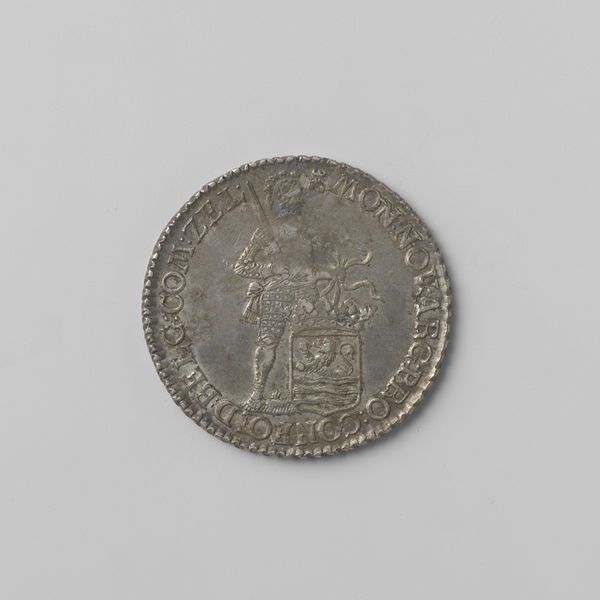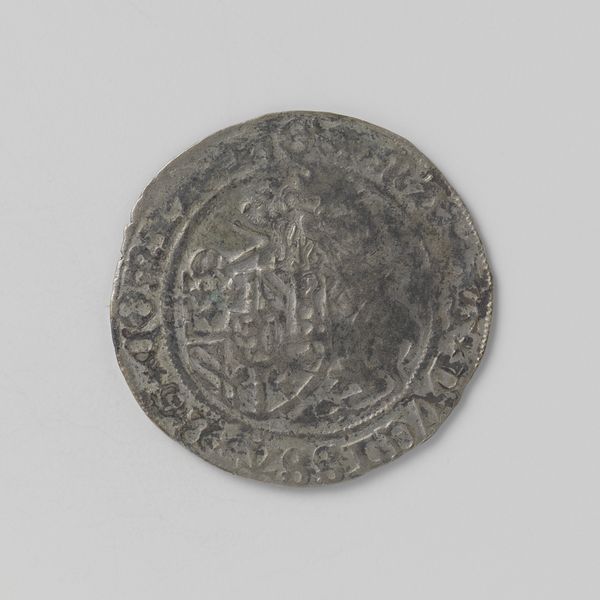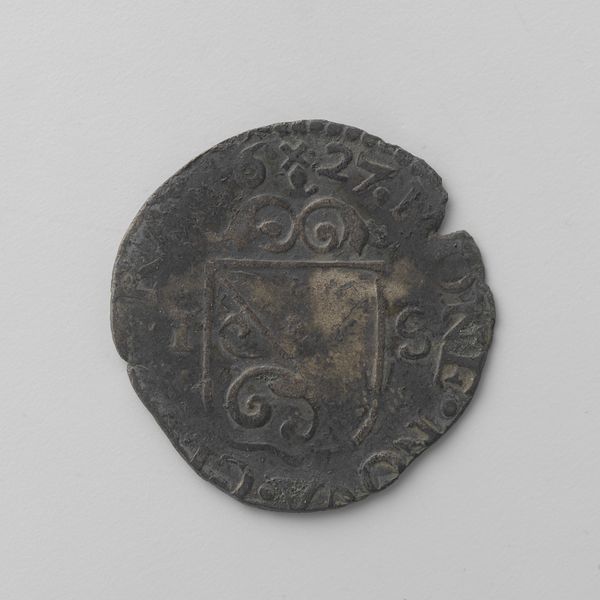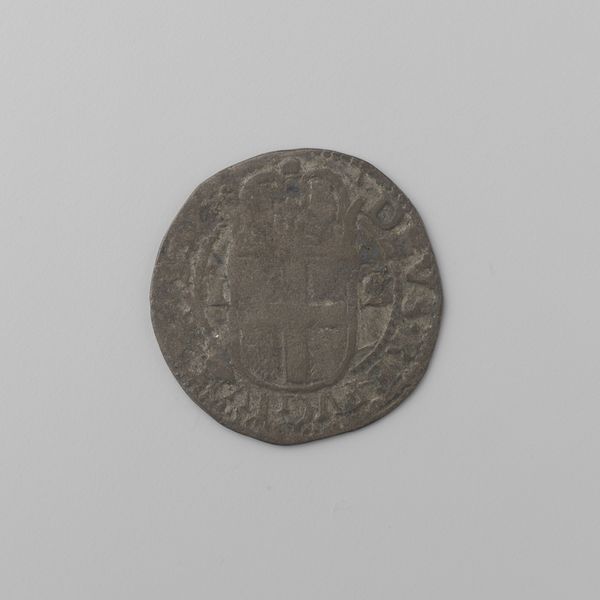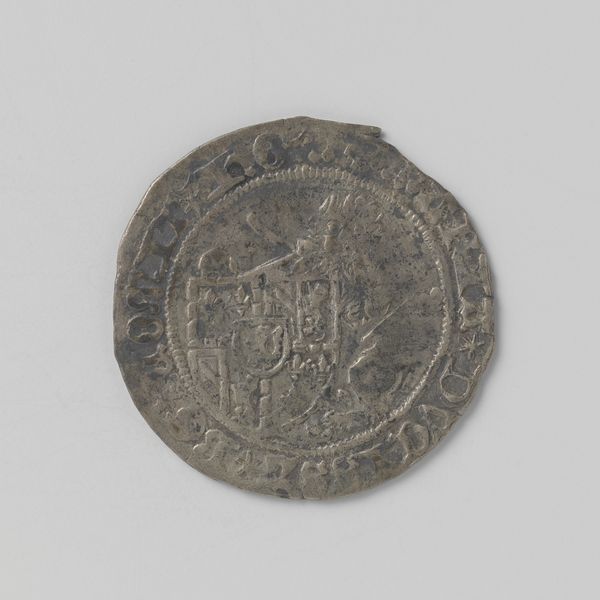
Utrechtse dubbele plak van Frederik van Blankenheim, 1393-1423 1393 - 1423
0:00
0:00
silver
#
medieval
#
silver
#
geometric
#
coin
Dimensions: diameter 3.1 cm, weight 3.36 gr
Copyright: Rijks Museum: Open Domain
This Utrechtse dubbele plak was made from silver sometime between 1393 and 1423, during Frederik van Blankenheim’s tenure. A coin like this one can tell us a lot about the economic life of the period. Consider that silver doesn't just appear in this form. It had to be mined, smelted, and then carefully die-struck to create this coin. The images and inscriptions, though worn down by time, speak of power and authority. Each strike was a small assertion of control over the economic sphere. But perhaps most importantly, the coin speaks to the transition from precious metal as a commodity, to coins representing a certain amount of value. The coin’s existence is bound up with the social and political systems of its time, reflecting the labor involved in its creation and its intended use in facilitating transactions. So, next time you see a coin, remember it's not just about the money; it's about the making, the materials, and the society that gave it meaning.
Comments
No comments
Be the first to comment and join the conversation on the ultimate creative platform.
